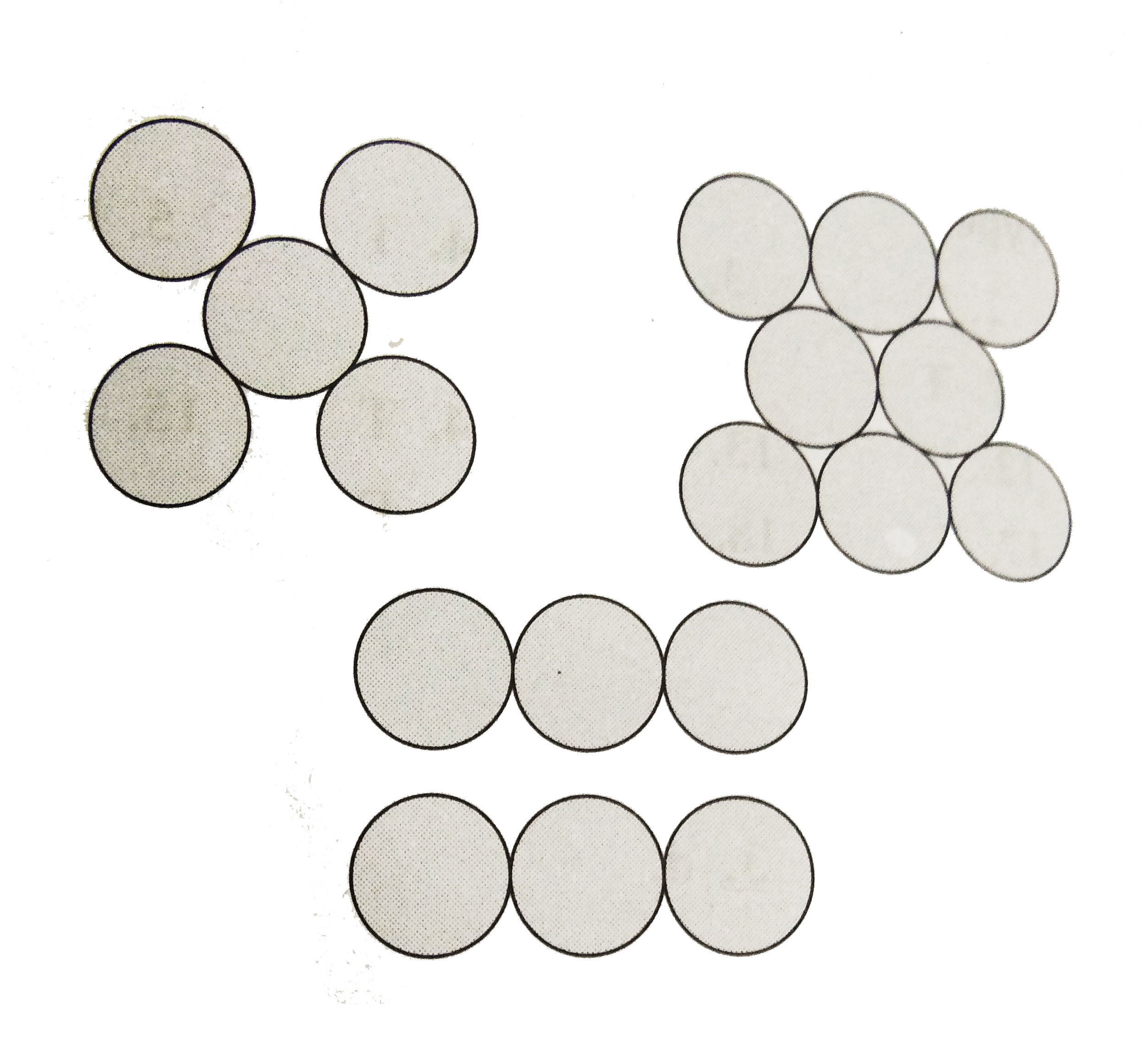Complete Solutions to Practice Problems of chapter STATES OF MATTER (SOLID STATE) of Class 11 book with complete answers and questions
| Class 11 | CHEMISTRY |
| Chapter | STATES OF MATTER (SOLID STATE) |
| OP TANDON | Practice Problems |
| Number Of Questions | 20 |
| Academic Year | 2023-24 |
An alloy of copper and gold crystallizes in cubic lattic, in which the `Au-` atoms occupy the lattice points at the corners of cube and `Cu-` atoms occupy the centre of each face. The formula of this alloy is `:`
02:01View SolutionA compound formed by elements `A` and `B` crystallises in a cubic structure where `A` atoms are present at the corners of a cube and the `B` atoms are present at the face centres.The formula of the compound is
01:47View SolutionA face-centred cubic element (atomic mass `60`) has a cell edge of `400` pm. What is its density?
02:25View SolutionThe face-centred unit of nickel has an edge length of 352.39 pm. The density of nickel is `8.9 g cm^(-3)`. Calculate the value of Avogadro's number. The atomic mass of nickel is 58.7 and 1 pm is equal to `10^(-10)` cm.
02:19View SolutionThe unit cell of aluminium is a cube with an edge length of 405 pm. The density of aluminium is `2.70 g cm^(-3)` . What type of unti celll of alluminium is ?
02:29View SolutionA substance forms face-centred cubic crystals. Its density is `1.984 g cm^(-3)` and the edge length of the unit cell is 630 pm. Calculate the molar mass of the substance.
02:02View SolutionMolybdenum forms body-centred cubic crystals whose density is `10.3 g cm^(-3)` . Calculate the edge length of the unit cell. The molar mass of Mo is `95.94 g "mol"^(-1)`.
02:37View SolutionAn element cyrstallises in a structure having a fcc unit cell of and edge 200 pm. Calculate its density if 200 g of this element contains `24xx 10^(23)` atoms.
03:00View SolutionThe element chromium exists in bcc lattice with unit cell edge `2.88xx10^(-10)` m. The density of chromium is `7.2 xx 10^(3) kg m^(-3)`. How many atoms does `52 xx 10^(-3)` kg of chromium contain ?
01:47View SolutionA cubic solid is made of two element `P` and `Q` Atoms of `Q` are the corners of the cube `P` at the body-centre. What is the formula of the compound? What are the coordination number fo `P` and `Q`?
03:06View SolutionA metallic crystal cystallizes into a lattice containing a sequence of layers `ABABAB…`. Any packing of spheres leaves out voids in the lattice. What percentage by volume of this lattice is empty spece?
02:41View SolutionA lead (II)sulphide crystals has an NaCl structure .What is its density ?The edge length of the unit cell is 500 pm . `N_(0)=6.023xx10^(23)` ,atomic mass :Pb =207.2,S=32.
03:20View SolutionThe unit cell of metallic gold is face -centred cubic.
How many atoms occupy the gold unit cell?
What is the mass of a gold unit cell ?02:47View SolutionPolonium crystallises in a simple cubic unit cell .It has atomic mass 209 and density `91.5 kg m^(-3)` .What is the edge length of its unit cell ?
02:09View SolutionThe unit cell of nickel is a face-centred cube. The length of its side is 0.352 nm. Calculate the atomic radius of nickel .
02:05View SolutionDetermine the simplest formula of an ionic compound in which cations are present at the corner and the anions occurs at the centre of each face.
01:25View SolutionSodium metal crystallises in body centred cubic lattic with cell edge `4.29 Å` .What is the radius of sodium atom ?
02:09View SolutionThree elements `P,Q` and `R` crystallize in a cubic solid lattice. The `P` atoms occupy the corners. `Q` atoms the cube centres and `R` atoms the edges. The formula of the compound is
02:25View SolutionThe first order reflection of the beam of X-ray from a given crystal occurs at `5^(@)`.At what angle will be the third order reflection?
02:04View SolutionThe figure below show the locations of atoms in three crystallographic planes in an fcc lattice. Draw the unit cells for these structure and identify these planes in your diagrams.
 02:20View Solution
02:20View Solution
Practice Problems questions and complete solutions for chapter STATES OF MATTER (SOLID STATE) of G.R. BATHLA & SONS CHEMISTRY (HINGLISH) of Class 11
All Exercises from OP TANDON Class 11 CHEMISTRY STATES OF MATTER (SOLID STATE)
- Asertion-Reason type Questions
- Illustrations of Objective Questions
- Integer Answer Type Questions
- Linked Comprehension Type Questions
- Matrix Matching Type Questions
- OBJECTIVE QUESTIONS (LEVEL -A)
- Objective Questions (Level-B)
- Practice Problems
- SELF ASSESSMENT Section I
- SELF ASSESSMENT Section II
- SELF ASSESSMENT Section III
- SELF ASSESSMENT Section IV
- SELF ASSESSMENT Section V
- SELF ASSESSMENT Section VI
- Some Solved Examples
